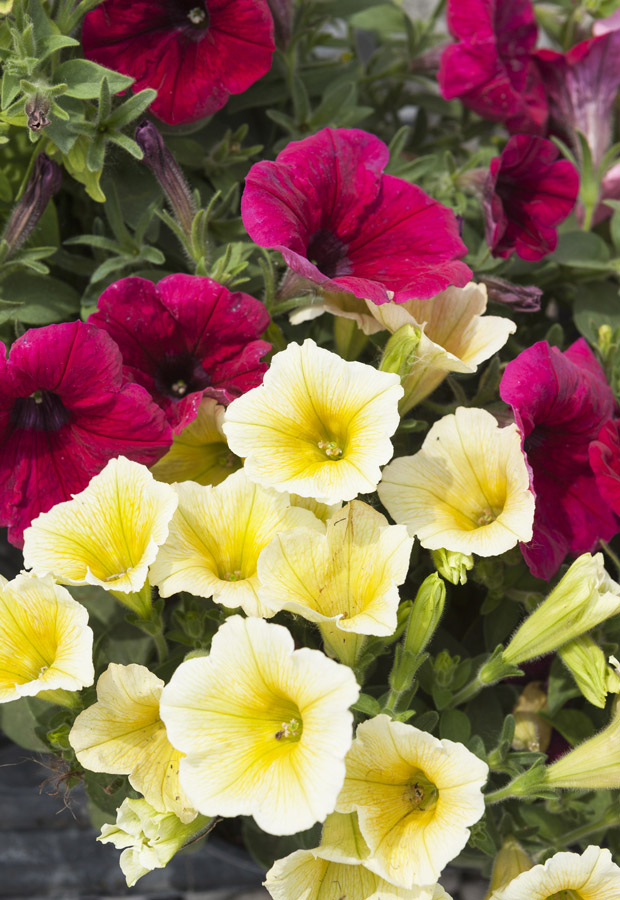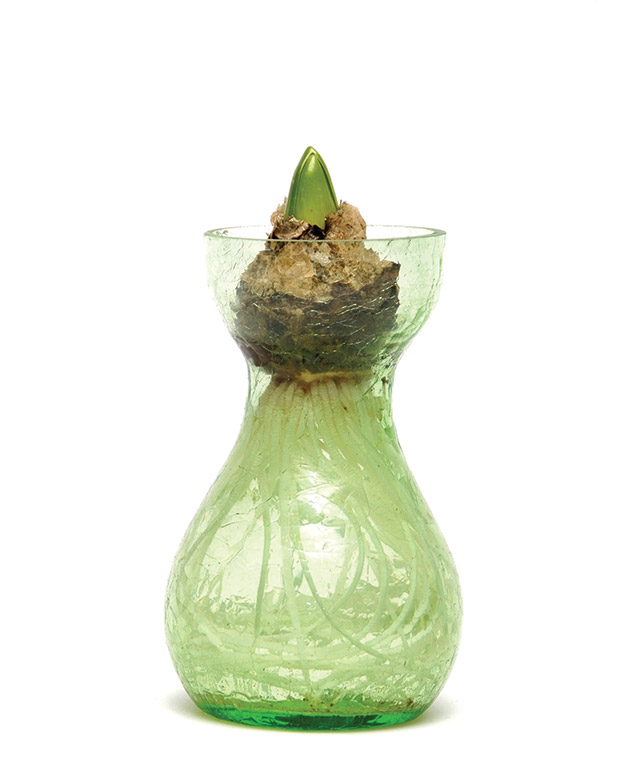8 tasks for a blooming flower garden in late summer and autumn

Fresh flowers will make the transition into the colder seasons much more do-able.
Words: Jane Wrigglesworth
1. For the late summer garden, plant aster, astrantia, chrysanthemum, coreopsis, cosmos, dahlia, echinacea, helenium, kniphofia (red hot poker), monarda (beebalm/bergamot), phlox, rudbeckia, saliva, and solidago (goldenrod).
2. Sow seeds of ranunculus, anemone, hollyhock, carnation, dianthus, aquilegia, and primroses.
3. If hyacinth bulbs are available, ‘plant’ in purpose-made glass jars indoors for forcing. Add water to the jar, so it sits just below the bulb. Place in a dark, cool spot until roots and top growth develop. Make sure the water stays topped up to just below the bulb. When the top shoots are about 5cm high, move to a warmer spot. Over the next few days, gradually introduce to the sun.

Hyacinth bulb in a ‘forcing’ jar.
4. Take cuttings of geraniums, penstemons, fuchsias, lobelias, lavender, hebes, and others.
5. Lightly prune roses to encourage autumn flowering.
6. Check azaleas, camellias, and other shrubs for thrips and spray with a suitable insecticide. It’s particularly important for camellias, which will start to form buds soon for winter flowering. When buds start forming, water regularly. Roots must remain cool and moist when buds form, otherwise bud drop may occur.

Left to right: Asters, pink phlox and astrantia major.
7. Remove spent summer-flowering annuals. Dig over the soil and add compost, sheep pellets, or aged manure before planting autumn annuals.
8. In areas with cool, wet winters, lift gladioli corms 6-8 weeks after flowering. Use a garden fork and gently dig beneath the corms, then lift the whole plant out of the ground. Cut the stalk off level with the top of the corm, rub or shake off any soil, and place the corms in a paper bag. Place the bag in a warm place for a couple of weeks until completely dry. Remove the roots and a layer of skin off the corm, which helps to keep them healthy. Store in a cool, dry spot until spring planting.
HOW TO PREVENT BLACK SPOT SPREADING
Spray affected plants with a mix of 1 tbsp of baking soda and 1 litre of water. Add a squirt of detergent for stickability.
Another organic method uses the leaves of she-oak (casuarina), which contain a natural fungicide. To make a spray, strip a handful of needles (about 10g) from their branches and add to 2 litres of water.
Bring to the boil then simmer for 20 minutes. Allow to cool, then add a further 8 litres of water and stir continuously for 10 minutes. This spray can be used on plants and soil once a fortnight from spring to autumn.
MORE HERE
Explore Sally Brown of Blueskin Bay Nurseries’ converted tram house and beautiful flower garden
 This article first appeared in NZ Lifestyle Block Magazine.
This article first appeared in NZ Lifestyle Block Magazine.
